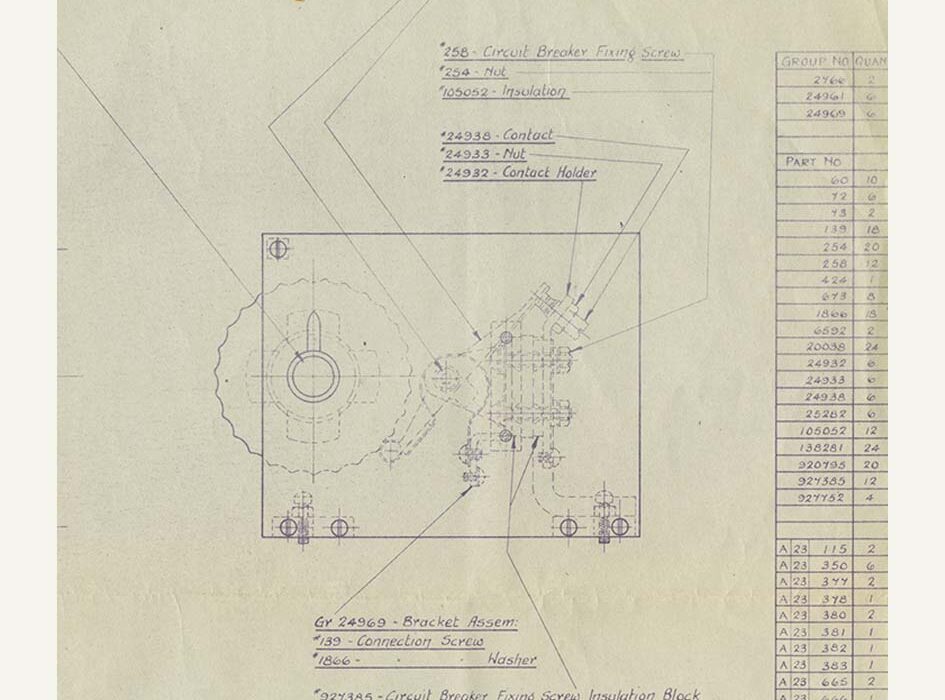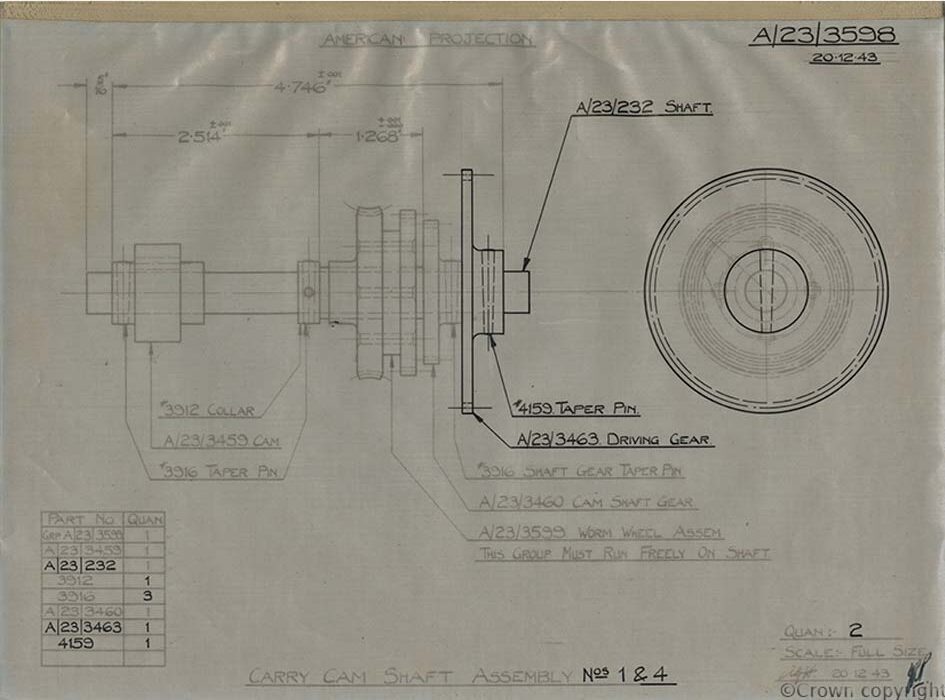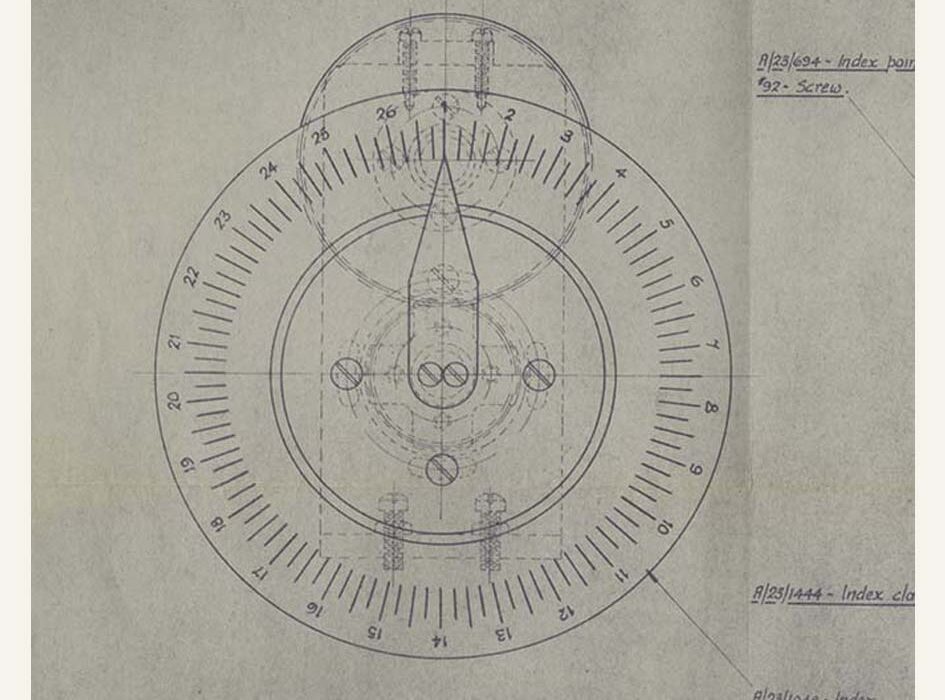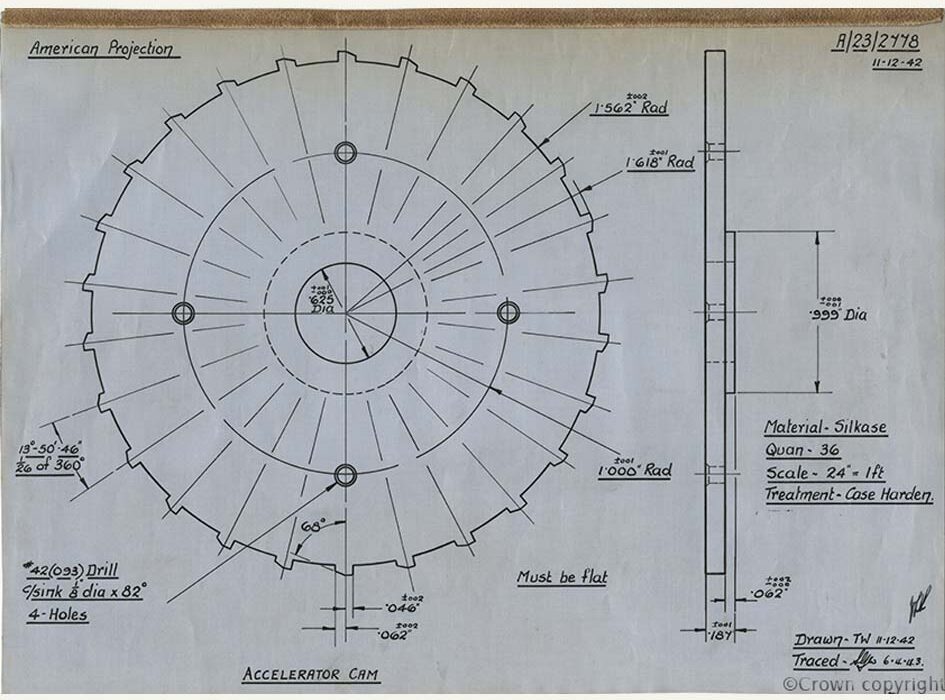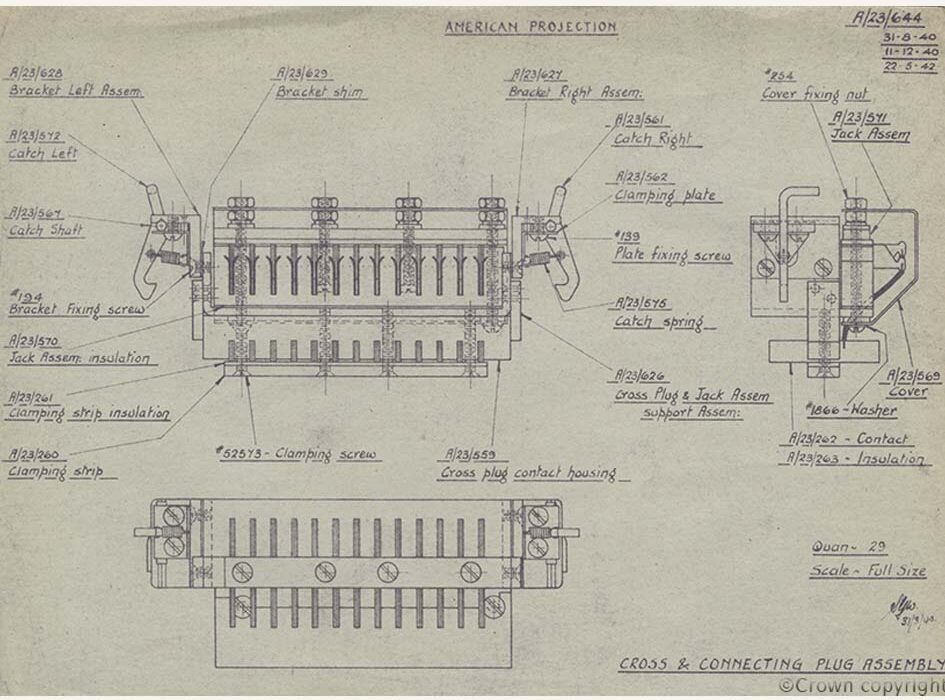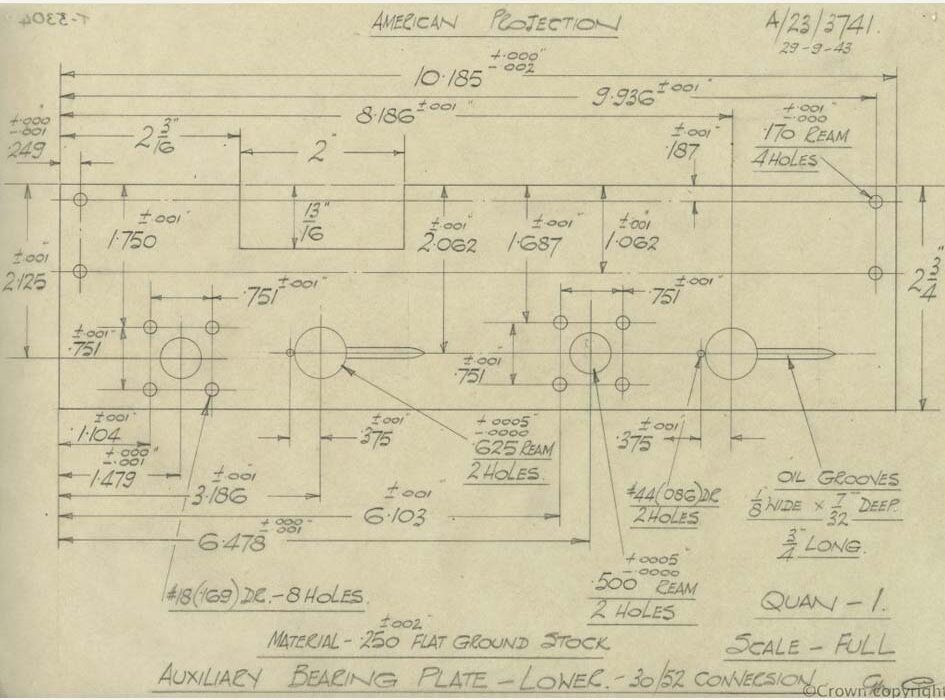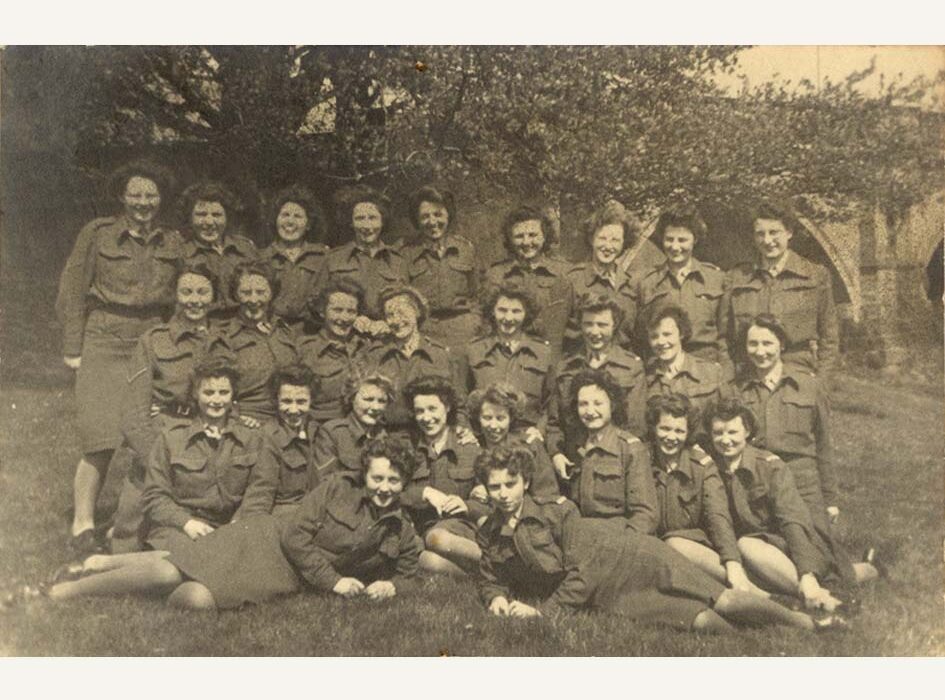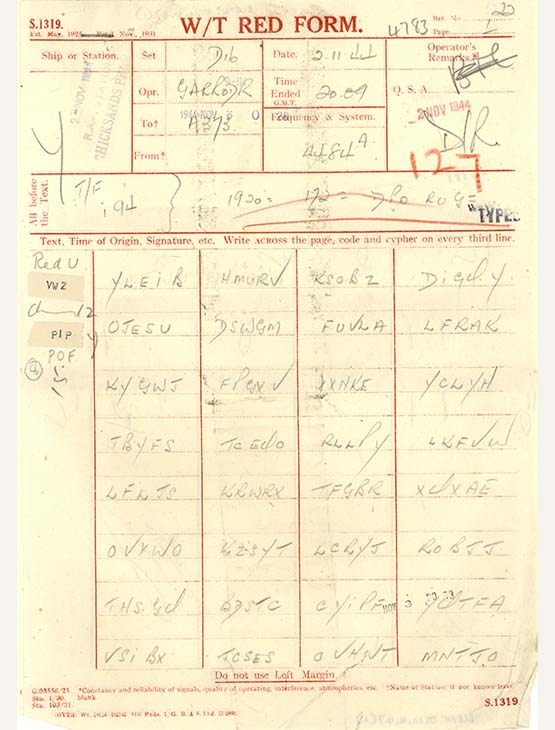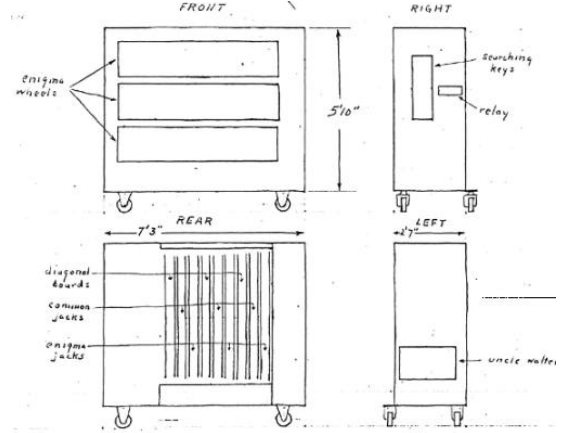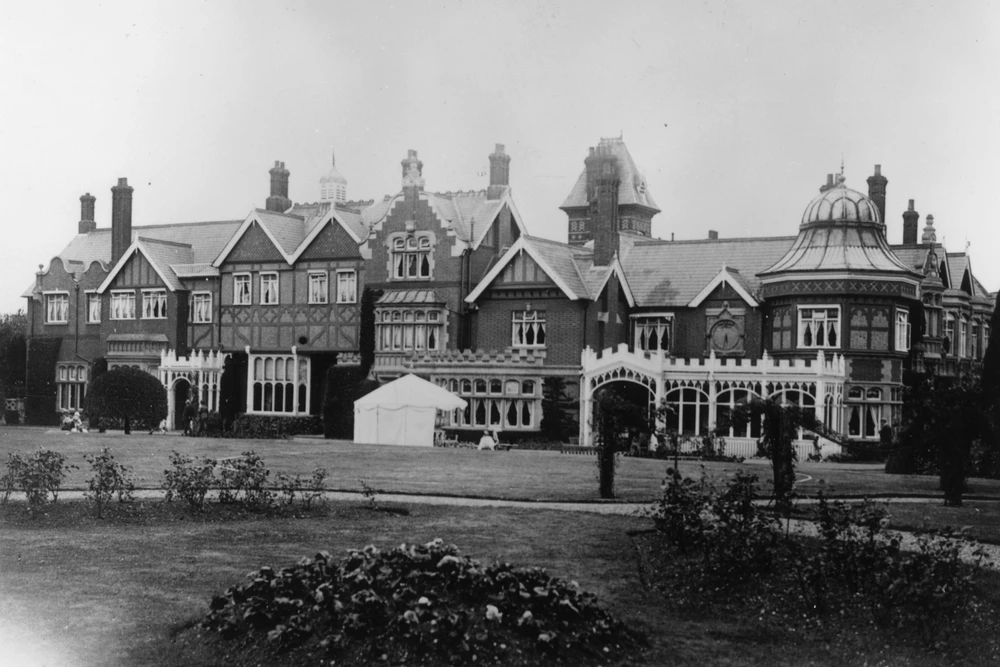
Bletchley Park

"Geographically it was well placed. Roughly 50 miles from London, on the L.M.S. main line and the junction for the trains that ran leisurely between Oxford and Cambridge."
~ Chapter II, Sitz & Blitz (2)
The Bletchley Park mansion in Buckinghamshire. Photo courtesy of BBC.
Bletchley Park was the headquarters of Britain's codebreaking operation during WWII. BP had many different stations ("huts") that had a specialized job in order to have the code broken as quickly as possible.
Bletchley Park Code Breaker Reveals How She Kept War Secrets for Over 60 Yrs, Good Morning Britain.
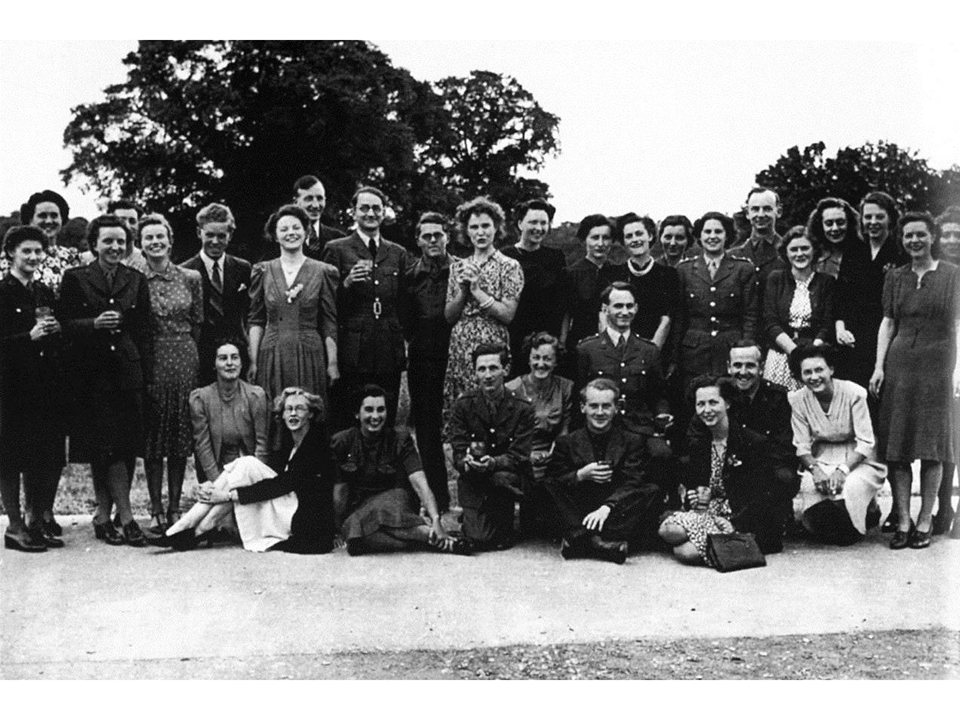
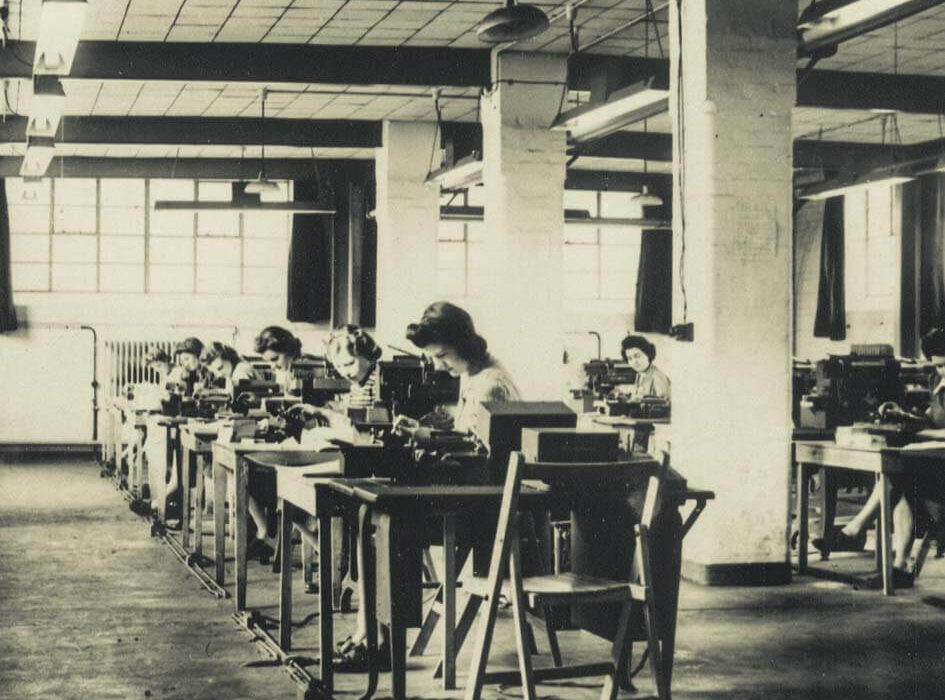
Some of the Bletchley Park workers. Photos courtesy of (from left to right): The National World War II Museum, Bletchley Park.
Hut 6 of Bletchley Park was focused on decoding Enigma messages. Like the Polish, they developed revolutionary machines.
The machines needed to be constantly changed as the Enigma did. These "bombes" designed by Gordon Welchman and Alan Turing greatly improved upon the Polish design.
Hut 6 in the 1990's. Photo courtesy of Bletchley Park.

Bombe drawings. Photos courtesy of Bletchley Park.
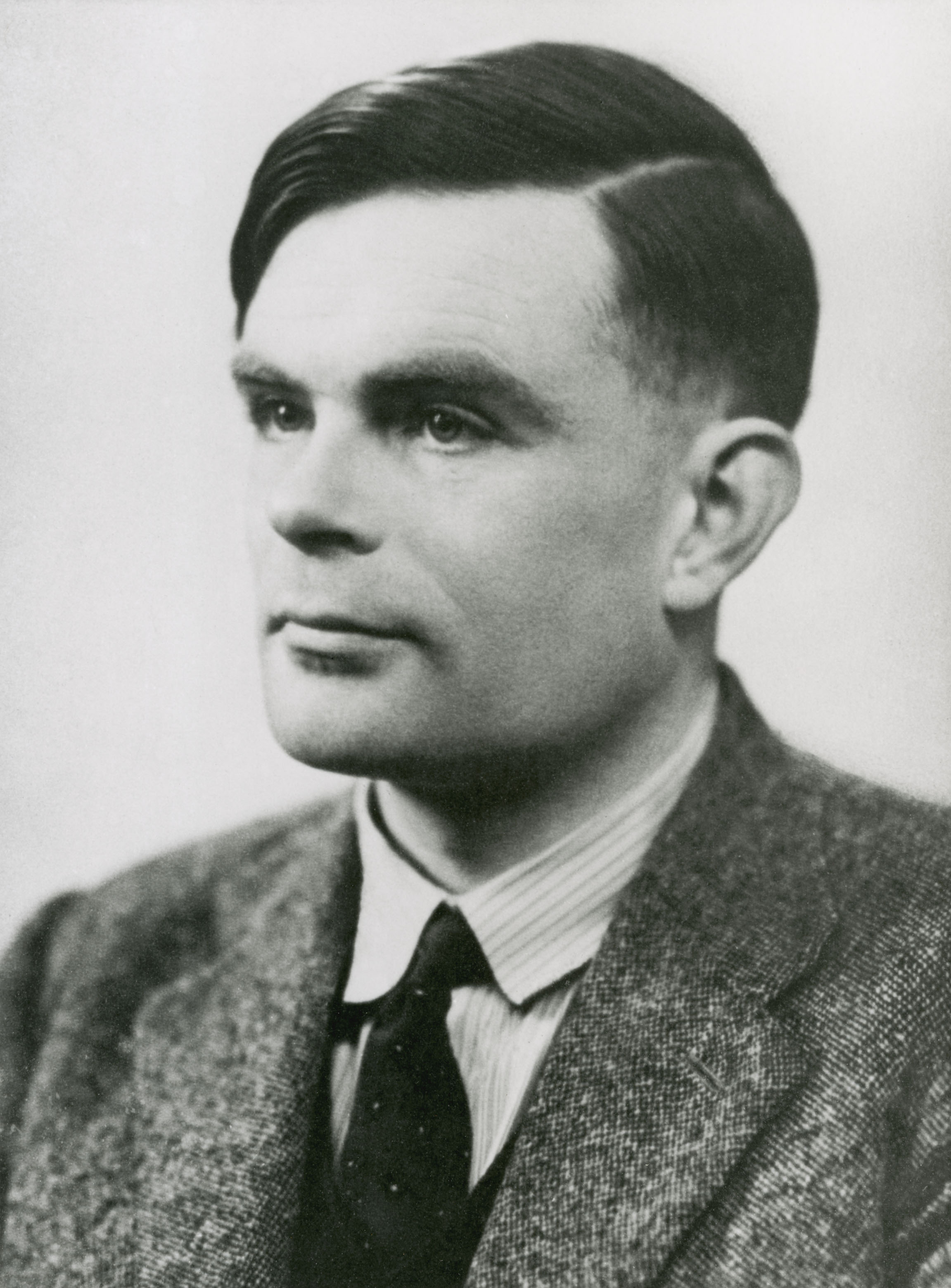
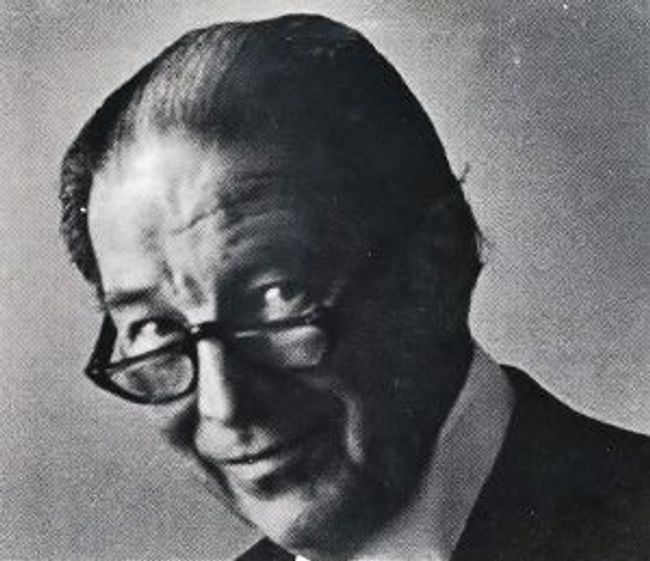
Portraits of Alan Turing (left) and Gordon Welchman (right). Photos courtesy of Science Museum and GCHQ.
Britain's Government Code and Cipher School agreed to share information gathered from the Enigma code in 1943.
Agreement between British Government Code and Cipher School and U.S. War.
Process of decoding
Enigma messages were decoded in Hut 6 of Bletchley Park and in the US.
Messages were then translated, transcribed, and sent to higher-ups to decide what to use them for.

